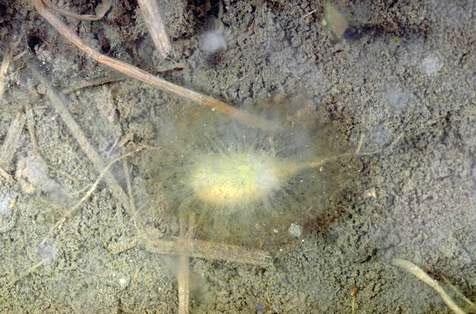N management in wet year: revised based on cool weather.
Earlier this week I sent out a blog discussing N management during a wet year. In the blog, one scenario (Scenario 2) mentioned was “I decided not to apply aqua but just go ahead and flood field when the rains started”. I was traveling around the valley yesterday looking at fields and I saw that rice that had been planted was not coming up – or was coming up very slowly. These rains have been accompanied by very cool weather (almost 10 degrees cooler than normal for this time of year) and the 10 day forecast shows continuing cooler than normal weather. This means plant growth and N uptake is going to be slower than normal. I suggested in my earlier blog post to apply your N around two weeks after planting. Given the cool weather and slow plant growth, I do not think this is the best strategy. You will have too much N sitting on the soil surface for a long period of time as the plants and this N will be highly susceptible to N losses. Given the weather we have had, I think a better strategy is to apply a starter blend containing about 30 lb N/ac 10 to 14 days after planting. Then at four weeks apply the remainder of the N balance as urea. This balance of urea should be applied in two to three applications about applied seven to ten days apart. Fields should not have water flowing through them when urea is applied and the crop still needs to be accessed using the Leaf Color Chart or GreenSeeker at PI to see if additional N is necessary. I say four weeks after planting to apply the urea; however this urea needs to be applied before the plants start to tiller. If weather warms up sufficiently and plant growth speeds up, this urea may need to be applied a bit earlier.
Arthropod and disease management
Just like rice, arthropod development is slowed down when weather is cool. Rice water weevil likes to fly during warm nights. Tadpole shrimp develop fast during warm weather. The cool weather we are experiencing might result in very little rice water weevil flight to recently flooded rice fields. If rice has been seeded and is germinating slowly, keep an eye for tadpole shrimp. Products for control might also take longer to kill them.
The slow germination of seeds can favor the development of seedling disease and seed rot. A higher seeding rate can help compensate for seed rot problems. Check the seeds, and look for fungal growth on the surface of the seed. Sometimes algae grow on this growth, giving it a greenish look. If seed rot becomes a problem, draining the field should help. More information here: http://ipm.ucanr.edu/PMG/r682100111.html
